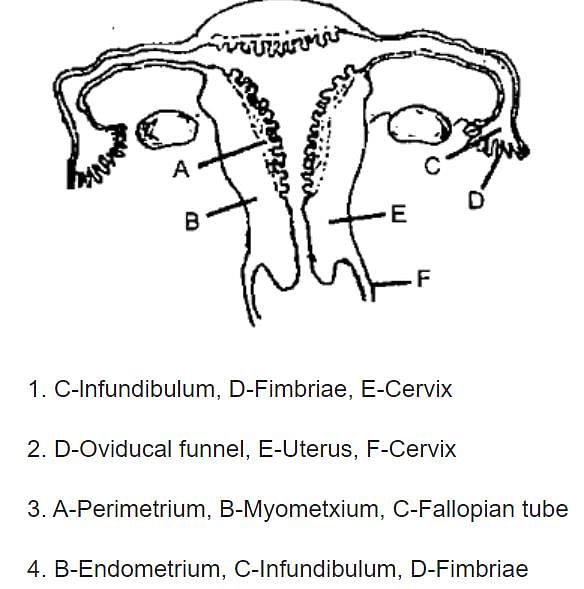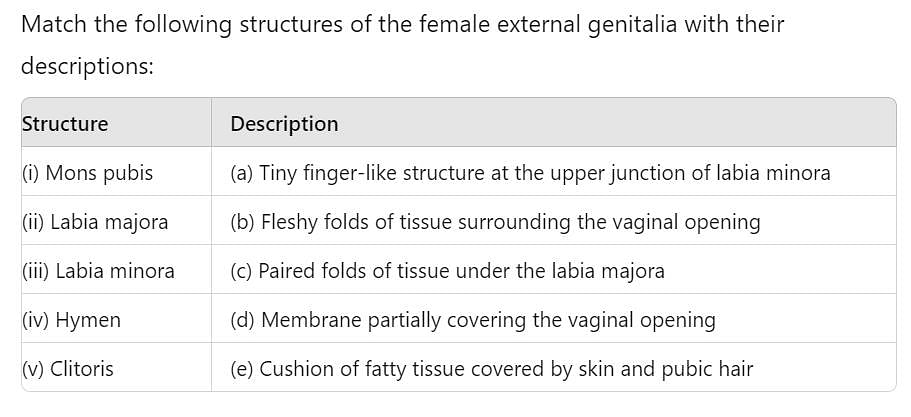Test: The Female Reproductive System (NCERT) - NEET MCQ
10 Questions MCQ Test Biology Class 12 - Test: The Female Reproductive System (NCERT)
In olden days, _____ used to serve as an indicator of virginity.
A human female is born with a million of eggs(primary oocyte) at the time of birth, only some 500 eggs get a chance of maturity. What is the destiny of rest of the eggs?
| 1 Crore+ students have signed up on EduRev. Have you? Download the App |
Identify the parts labelled as A to F from the given diagram of human female reproductive system and select the correct option.


The female external genitalia include
(i) Ovary
(ii) Mammary gland
(iii) Mons pubis
(iv) Clitoris
(v) Labia majora
Read the following statements about the uterus and identify which are correct and which are incorrect:
Statement A: The uterus is single and is also known as the womb.
Statement B: The shape of the uterus is like an inverted pear and is supported by ligaments attached to the pelvic wall.
Statement C: The cervix opens directly into the uterine cavity, bypassing the vagina.
Statement D: The wall of the uterus has three layers: perimetrium, myometrium, and endometrium.
Statement E: The myometrium is responsible for strong contractions during the menstrual cycle.
Statement F: The endometrium undergoes cyclical changes during the menstrual cycle.
Which of the following statements about the uterus and female external genitalia is incorrect?
The figure given below depicts a diagrammatic sectional view of the female
reproductive system of humans. Which one set of three parts out of A-F have been
correctly identified?

|
86 videos|294 docs|184 tests
|



















